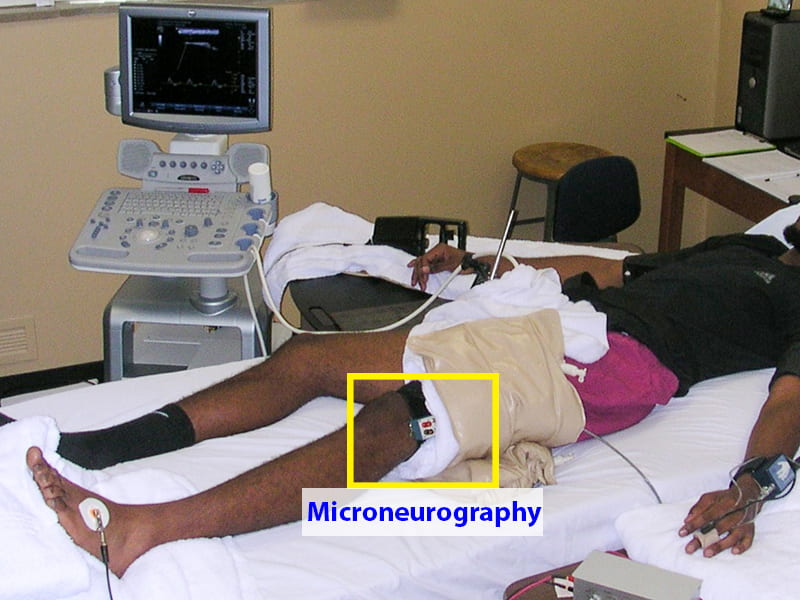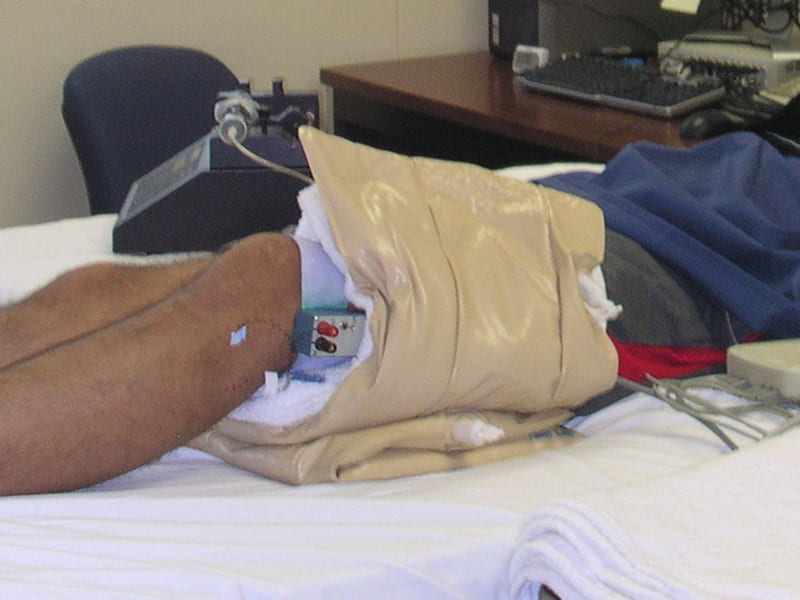Direct measurement of the sympathetic nervous system activity (SNA) originated in Sweden in the 1970s. The technique involves insertion of a tungsten microelectrode into a peripheral nerve, most commonly the peroneal nerve of the leg and can be used to assess both skin and muscle sympathetic nerve activity. Our lab primarily utilizes this technique to investigate muscle sympathetic nerve activity both at rest, and during sympatho-excitatory maneuvers (e.g. exercise, sticking hand in cold water).
Above: A representative photo of a study design including microneurography, the technique used to obtain the direct recording of the sympathetic nervous system. Microneurography includes insertion of a very small electrode into the common peroneal nerve (near the fibular head). There are no long lasting side effects, and the procedure is relatively painless.
Above: Close up of microneurography. The white-flag electrode is the active electrode placed into the peroneal nerve. The blue-flag electrode is placed just under the skin, as a reference. Both are connected to a pre-amplifier (blue box), which brings the information back to the nerve processor.


